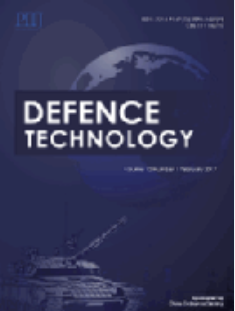Damage mechanism of gamma-irradiated repurposed pultruded glass fibre polyester composite subjected to low-velocity impact using non-destructive techniques
IF 5.9
Q1 ENGINEERING, MULTIDISCIPLINARY
引用次数: 0
Abstract
Investigating the influence of radiation on glass fibre composites is essential for their use in space and aerospace environment. Gaining insight into the damage mechanisms caused by gamma irradiation, can improve the safety and resilience of structures. This paper is aimed at investigating the failure mode and damage of gamma-irradiated repurposed pultruded glass fibre-reinforced polyester subjected to low-velocity impact using three types of non-destructive techniques. Three sets of differently layered configurations (CRC, WCRW, W2CR2C) consisting of chopped (c), roving (r), and weaved (w) fibre-reinforced polyester are applied in this study. Drop hammer test is applied to evaluate the low-impact resistance properties of Gamma-irradiated composite at 100 kGy, 500 kGy, and 1000 kGy. Preliminary flexural and hardness tests are conducted to further assess the behaviour of irradiated polymer composites. Further, the damage modes associated with the low-impact test are characterised using infrared thermography, flat panel digital radiography, and microscope observation. The results show that the composites irradiated with various doses display good impact resistance at 20 J, presenting minor damages in the form of dents on the surface. The irradiated CRC and WCRW display best impact resistance at 500 kGy, while W2CR2C at 1000 kGy. This shows that the layering sequence of reinforcement fibre can influence the impact resistance of irradiated composites. Apart from that, the application of non-destructive techniques show different damage mechanisms in the form resin cracks, yarn splitting/fracture, and matrix splitting when the composites are exposed at high and low irradiation doses. These findings offer valuable data for the defence industry, particularly in the areas of repair, maintenance, and the development of new materials.

用非破坏性技术研究伽玛辐照改性拉挤玻璃纤维聚酯复合材料低速冲击的损伤机理
研究辐射对玻璃纤维复合材料的影响对其在空间和航天环境中的应用至关重要。深入了解辐射损伤机制,可以提高结构的安全性和弹性。本文采用三种非破坏性技术,研究了伽玛辐照后再用拉挤玻璃纤维增强聚酯在低速冲击下的失效模式和损伤。本研究采用了三组不同分层结构(CRC, WCRW, W2CR2C),由短切(c),粗纱(r)和编织(w)纤维增强聚酯组成。采用落锤试验对辐照复合材料在100kgy、500kgy和1000kgy下的抗低冲击性能进行了评价。进行了初步的弯曲和硬度测试,以进一步评估辐照聚合物复合材料的行为。此外,使用红外热成像、平板数字射线照相和显微镜观察来表征与低冲击试验相关的损伤模式。结果表明:不同剂量辐照后的复合材料在20 J下均表现出良好的抗冲击性能,表面出现轻微的凹痕损伤;辐照的CRC和WCRW在500 kGy时表现出最好的抗冲击能力,而W2CR2C在1000 kGy时表现出最好的抗冲击能力。说明增强纤维的层序对辐照复合材料的抗冲击性能有一定的影响。此外,在非破坏性技术的应用下,复合材料在高、低辐照剂量下的损伤机制不同,表现为树脂裂纹、纱线劈裂/断裂和基体劈裂。这些发现为国防工业提供了有价值的数据,特别是在维修、维护和新材料开发领域。
本文章由计算机程序翻译,如有差异,请以英文原文为准。
求助全文
约1分钟内获得全文
求助全文
来源期刊

Defence Technology(防务技术)
Mechanical Engineering, Control and Systems Engineering, Industrial and Manufacturing Engineering
CiteScore
8.70
自引率
0.00%
发文量
728
审稿时长
25 days
期刊介绍:
Defence Technology, a peer reviewed journal, is published monthly and aims to become the best international academic exchange platform for the research related to defence technology. It publishes original research papers having direct bearing on defence, with a balanced coverage on analytical, experimental, numerical simulation and applied investigations. It covers various disciplines of science, technology and engineering.
 求助内容:
求助内容: 应助结果提醒方式:
应助结果提醒方式:


